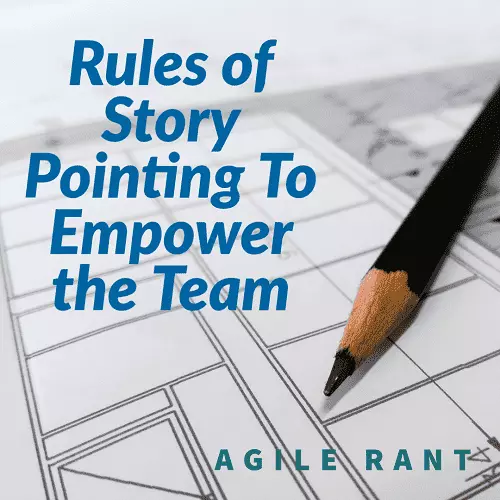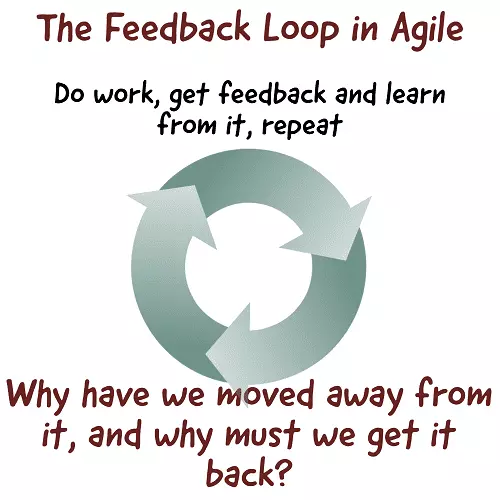
What are the rules for story points? Story points give numerical value to user stories. A common practice in Agile and Scrum methodologies. But, there are specific processes that help facilitate this. Find out what they are. Improve with these best practices.
Rules of story pointing
- Rules of story pointing
- Story points are not an exact planning tool
- Use story points to make sure teams are not overloaded in sprints
- Story points are about relative complexity and difficulty
- Don’t focus too much on exact points
- Details of the work isn’t needed for story pointing
- Story points are relative sizing
- Don’t hassle over small differences in points
- Create story points as a team
- Estimation of points, or is it hours?
- Benefits of using story points for your Agile process
- Additional content to help with story points
The following are rules to help with planning and to help with story points on Agile user stories. As part of Agile estimation techniques, story points help the team organize around the work. So continue on to find rules and best practices to help get your story points in Agile.
In the world of software development, complexity is everywhere. While, more efficiency is sought. Making an easy way to have relative estimation needed. Enter story points. Those helpful guides that show a way thru estimation. In the ever-shifting terrain of software crafting, where tasks and features span all sizes, intricacies, and potential hurdles, story points are the tool to get you through estimation.
Story points gauge the toil of a task. But also the complexity. While servicing as easily shared information. Shared across work on the cross-functional team. Use the best practice of story points, and the tough task of estimation becomes more clear. It becomes rational and logical. Teams can collaborate with it on their journey. Use it to optimize resources for the goals at hand. With relative estimates, fine-tune workflows and build success.
Story points are not an exact planning tool
Let me clarify what story pointing is not! It’s not a precision-based estimation and planning instrument. Its purpose is not to painstakingly calculate the exact workload. Or to predict precisely how long a task will take. Which is followed by an exact count of work items that the team can handle in a designated timeframe.
You do not use story points to meticulously map out the sprint’s limits and possibilities. Use it as a tool to guide. A tool to understand whether the workload is excessive or insufficient. When you consider your Agile estimation approaches, remember, it’s not a finely tuned planning tool; rather, it serves as a dynamic means of assessment!
Use story points to make sure teams are not overloaded in sprints
Use the pointing process to build team understanding. Shared knowledge of the overall workload they’re facing. This best practice aids to grasp the level of commitment required. Or any needed changes to meet that commitment. However, it doesn’t provide an absolute measure of the work; rather, it offers clues into whether the potential workload is beyond what can feasibly be accomplished.
Typically, teams work down the Product backlog items, completing their story point estimates. Adding to the Agile story. Agile project management includes some form of periodic review and estimation.
Story points are about relative complexity and difficulty
The point value gauges relative complexity and difficulty. When the team consistently assigns a certain number of points to a moderately challenging user story, it sets a benchmark for similar tasks in Agile estimation. It’s about relative values, not precise time or effort estimations.
It’s important to note that story pointing doesn’t need an exact understanding of past work’s complexity and difficulty. This isn’t the primary goal of the process. Instead, it serves as a means to assess the work. Then compare and gain an understanding of the effort required for completion. This empowers the team to assess whether and when they can accomplish it. Based on comparisons with other tasks.
Don’t focus too much on exact points
Consider this a clear reminder that story points are not meant to be precise. They provide a conceptual grasp of the work, aiding the team in structuring their approach and comprehending the extent of effort required. However, they do not intend to offer an absolute measurement of the tasks at hand.
It’s primarily about engaging in a collaborative process to assign relative point values to the work. This aids in comprehending and strategizing for the tasks slated for upcoming software development sprints.
Typically the Fibonacci sequence is used as the available points for an Agile story.
Details of the work isn’t needed for story pointing
While pinpointing the exact intricacies of a task isn’t obligatory when allotting points to a user story, what truly matters is a solid understanding of the goals and a general roadmap the team intends to take in achieving them. Nevertheless, an exhaustive breakdown of every single work aspect isn’t a prerequisite for the process of story pointing.
Let’s reemphasize, story pointing isn’t an intricate measure of the workload, nor does it serve as a meticulous resource planning tool. The nitty-gritty details should be well comprehended by the team, and the approach can be flexibly customized according to their preferences.
Teams might opt to delve into the finer details of a user story prior to embarking on the story pointing process. This method is entirely valid, but it’s imperative to acknowledge that it’s a fusion of refining the user story and conducting story pointing. In genuine story pointing, the relative point assessment stems from the user story’s objectives.
Story points are relative sizing
Story points are a relative number. Meaning that similar pieces of work across user stories should have similar story point values. But, the story point values are in relation to the similar work of that team.
For that reason, other teams will not necessarily have the same meaning for story pointing. Again, back to using something like the Fibonacci sequence for the possible point values.
Don’t hassle over small differences in points
Engaging in lengthy discussions over minor questions in point values hinders productivity. It’s vital to recall that these values aren’t meant to be exact, as highlighted earlier. Thus, the objective isn’t to ensure absolute precision in point values, given the natural fluctuations in workloads. In general, slight variations in points bear minimal importance. Especially when you consider the ongoing nature of tasks.
When a specific task remains incomplete, it triggers a ripple effect on other tasks. Causing potential reorganization. Consequently, it’s wise to downplay minor differences in story point values. While keeping Agile principles in mind. Through more effective use of story points, you and your team can review a product backlog more effectively. Thereby enhancing planning and execution.
As a result, the product owner gains the ability to optimize value in the backlog. Helping the prioritization process. The Agile approach emphasizes streamlined estimations that don’t overly tax team progress. This offers a high-level estimate. Which will help you to effectively steer the software development process within an Agile environment.
Create story points as a team
One thing that must be remembered is that all the perspectives need to be heard to come up with good estimates. In taking on complex work, we often listen to those that know the most about said work. That is great, and they are an extremely valuable resource. But that is one end of the “estimate” spectrum. Letting that opinion guide team estimates fails to bring in the ideas and perspectives that get a well-rounded estimate.
It is not simply about someone else doing the work and maybe if they are not an expert that it could take longer. It is more that by following the leading opinion, there are assumptions made and biases followed that nobody is even aware of. You miss out on the chance to learn and grow your understanding as a team. Thus creating a better Agile estimate. It is a team sport and takes collaborative team effort to have well estimated points.
It is really about having a way to facilitate the conversations about the work with the team. Getting them to explore ideas and grow shared understanding. Agile estimation techniques should include the knowledge and experience of the entire team.
Estimation of points, or is it hours?
We fall into the points or hours trap all of the time. What is it? Well, in short, estimates always want to know the time it will take to complete something. This comes from past work practices as much as it comes from human nature. We just want to know when it will be done.
However, if working in Agile software development, you are typically working in smaller increments of time. IE, the sprint. This is should be smaller, typically around 2 to 3 weeks. If talking about work that will be done within 3 weeks, is it really necessary to know when it will be done? You know the end date of the sprint that said work will be within. If it has a sprint.
Thus, the more important part of the Agile estimation is understanding the relative complexity of the work. And of course, breaking the work up into manageable pieces. This means that you have some understanding of a team how complicated and how difficult a piece of work is. Allowing the team to fit that work into a sprint. Again, as long as the work is in manageable pieces.
Benefits of using story points for your Agile process
- Story pointing creates a standard and repeatable process to estimate work.
- Use story points to estimate and you allow a team to move quickly thru planning processes.
- Story pointing by a team can be very accurate.
- The process can be lightweight and easy to use for Agile teams, if you let it.
- Helps quickly build out an estimated product backlog.
- Helps to prioritize when there is a question on size.
- With story points you can start to understand predictable velocity.
- Speeds up your sprint planning process.
- Enables a sequenced list of product backlog items.
- Story point estimates save time for the actual work.
Story points are one of the best Agile tools available. Product owners, development teams and everyone involved in the process can benefit. Consider using it if you do not. And be Agile my friends!
Additional content to help with story points
The following are complimentary Agile methodologies. Combining multiple practices together, using over time, will help to get to a place of continuous improvement. With predictable and reasonable effort, less uncertainty, accuracy and quality, reduced risk and errors, and consistent value delivery.
As a team, collaborate in this process of assigning values to the stories. Through this process of story point estimation, points are utilized to compare different tasks. Estimating their relative value as points on the user story. These story point values gauge the effort, intricacy, and time-related risk associated with the work. Elevate your team’s performance by implementing these best practices for story points.
There are a lot of reasons to use story points. The best practices will help your process. Consider the points made above. Also check out this good read. 10 reasons to use story points.
It’s absolutely critical that the people performing the story point estimations are the people who are responsible for doing the work.
Source: simplilearn.com
A popular exercise for increasing engagement is called “planning poker.” Teams select an item from the backlog and briefly discuss it before mentally producing an estimate to share aloud.
Source: business.adobe.com



